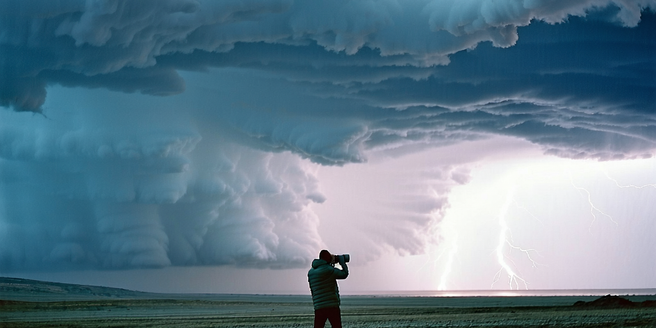
Understanding Weather Patterns in Photography
The interplay of light, shadows, and cloud formations can transform an ordinary photo into a dramatic masterpiece. Understanding weather patterns is crucial for photographers seeking to capture stunning landscapes. Monitor weather forecasts and use tools like radar maps to anticipate conditions such as approaching storms or rain. Recognize how different times of day and weather systems affect light and visibility. For instance, the golden hour just before sunset can cast a warm glow on storm clouds, creating contrast. Familiarize yourself with local climates and seasonal changes that bring unique atmospheric phenomena. Patience is key, as waiting for the right moment when natural elements align can be rewarding. As you harness the power of weather, your photography will evoke emotions and narrate stories beyond words.
Essential Gear for Capturing Storms
Capturing dramatic weather requires specialized gear to ensure both safety and quality. A sturdy tripod is indispensable for steady shots in windy conditions, crucial for long exposure settings often used to capture lightning. Choose a DSLR or mirrorless camera with a weather-sealed body to protect against moisture and dust. Wide-angle lenses help encompass expansive landscapes while telephoto lenses can focus on distant storms. A polarizing filter enhances contrast and saturation, particularly helpful when shooting during daylight. Lightning triggers are useful, allowing photographers to capture unpredictable strikes efficiently. Most importantly, don’t forget protective gear for yourself; remember a raincoat, waterproof footwear, and a weather-resistant camera bag. With the right equipment, you can safely and effectively capture the awe-inspiring beauty of storms.
Techniques for Photographing Lightning
Photographing lightning is both challenging and rewarding, requiring a mix of patience and technique. To start, find a safe location with a clear view of the storm. A sturdy tripod is essential to avoid shakes during long exposures. Set your camera to manual mode, with a low ISO to reduce noise, and a small aperture for a greater depth of field. Use a remote shutter release to prevent camera shake. A shutter speed of 10-30 seconds increases your chances of capturing strikes, though experimentation is key. Lightning triggers can help capture unpredictable bolts. Focus on areas where lightning is frequent and adjust your composition to include interesting foregrounds for depth. By mastering these techniques, you can capture breathtaking images of nature’s most electrifying phenomenon.
Composing Breathtaking Cloud Formations
Cloud formations are dynamic and ever-changing, providing ample opportunities for stunning compositions. To reveal their grandeur, focus on composition techniques that highlight the layers and textures of clouds. Utilize the rule of thirds by positioning the horizon off center, allowing the sky to dominate the frame. Leading lines, like roads or rivers, can draw the eye toward towering clouds. Consider using wide-angle lenses to capture the vastness of an atmospheric phenomenon. Shoot during the golden or blue hours when clouds are bathed in dramatic light. Pay attention to contrast and shadows, which can emphasize cloud details and textures. Experiment with time-lapse photography to capture the evolving nature of cloudscapes. With careful composition, you can transform cloud formations into powerful visual stories.
Post-Processing Tips for Mood and Drama
Post-processing is an integral step in enhancing the mood and drama of weather landscape photography. Start by adjusting the exposure and contrast to highlight lightning or the intricacies of cloud formations. Use split toning to add color tinting, enhancing the overall mood. For stormy scenes, consider using desaturation techniques to emphasize the raw and moody atmosphere. Clarity and sharpness adjustments can bring out details in the clouds and rain. Applying selective dodging and burning can lead the viewer’s eye and create dimensionality. Color grading is another vital tool; use it to evoke specific emotions, making your image more compelling. Experiment with various filters and presets to find the best fit for your aesthetic vision. Through thoughtful editing, your images will capture the essence and energy of dramatic weather.
